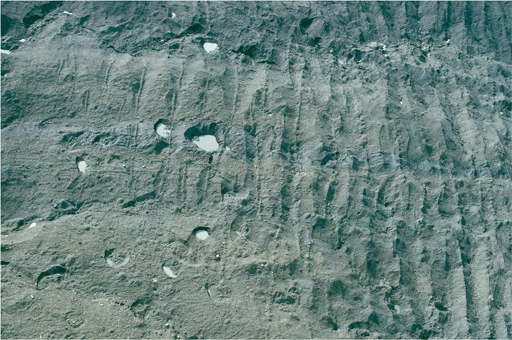drift

North-looking near-vertical aerial photograph of a 1-mile by 1.5-mile area recently-exposed by the retreat of Bering Glacier. The ground surface is covered by glacial sediment deposited in several ways, including as lodgement and ablation till, and as crevasse fill, Bering Glacier, Alaska. Bering Glacier flows through Wrangell-Saint Elias National Park. Credit: USGS.
Drift is a gradual change in the land mass, related to soil creep.
In oceanography it indicates slow, oceanic circulation. Sedimentary drift is a general description of surface debris carried either by a river or glacier.
The material left behind after the retreat of a glacier. The unstratified material deposited directly on land is called till; fluvio-glacial drift, well stratified, is that transported by melted waters of the glacier. Drift may be composed of particles from the fine sand up to huge boulders, and may be up to 100 meters deep.


